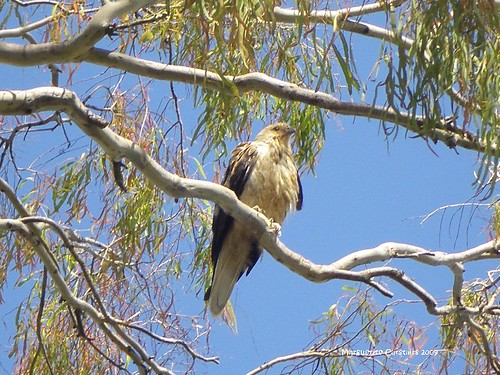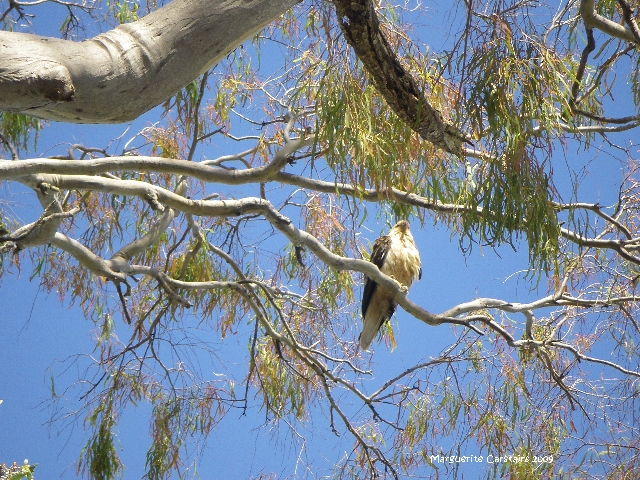Scientific name: Pandion haliaetus
Family: Accipitridae
Order: Falconiformes
What does it look like?
Description
The Osprey is a medium-sized fish-eating raptor (bird of prey). It has dark brown upperparts contrasting with pale underparts. There is a black band through the eye, separating the white throat from the pale crown. The Osprey has a rather small head and neck and typically swivels its head around or sways its head from side to side. When it is perched, there is a short bristly crest. The eyes are placed well forward on the head. The fingered wings in flight are narrow and angled distinctively. There are dark carpal patches on the underwing (at the bend in the wing). The beak is strongly hooked and the legs are powerful. The female is similar to the male but is larger and has a fuller, darker breast band. The Osprey is also called the Fish Hawk or White-headed Osprey.
Similar species
The White-bellied Sea-Eagle, Haliaeetus leucogaster, is much larger and soars with up-swept wings, rather than the sharply bowed wings of the Osprey.
Where does it live?
Distribution
The Osprey is cosmopolitan, being found in many coastal and lake areas of the world. In Australia, it is found on the north and east coast from Broome to the south coast of New South Wales. There is also a southern population from Kangaroo Island to the Great Australian Bight and a western population from Esperance to Cape Keraudren. Ospreys are also found in the Phillipines, Indonesia and New Guinea.
Habitat
Ospreys are found on the coast and in terrestrial wetlands of tropical and temperate Australia and off-shore islands, occasionally ranging inland along rivers, though mainly in the north of the country.
Seasonal movements
Ospreys are sedentary, though they will range more freely in non-breeding periods. They are frequently faithful to a nest site, using the nest for many years. Young birds may disperse 20 km - 400 km. In Europe, Ospreys are migratory, moving to warmer countries in the winter.
http://www.birdsinbackyards.net/bird/331
The Osprey has oily plumage, so that when it dives or plunges under the water for fish, its feathers become less wet and it can take off again. It does not need to spread its wings to dry, unlike cormorants.
Facts and figures
Research Species: NoMinimum size: 50 cm
Maximum size: 65 cm
Average size: 60 cm
Average weight: 1250 g
Breeding season: April to July in north, September to October in south, June to August in southern Queensland.
Clutch size: Two to three.
Incubation: 40 days
Time in nest: 42 days



140x45.jpg)




No comments:
Post a Comment